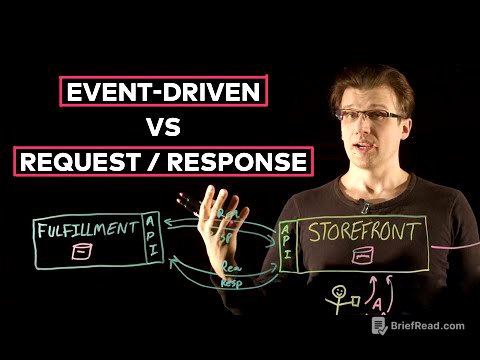TLDR;
This video provides a comprehensive review of accounting principles, covering topics from journal entries and T-accounts to merchandising companies, inventory valuation, special journals, bank reconciliation, and the allowance method for uncollectible accounts. It includes step-by-step explanations, examples, and practical tips for solving accounting problems.
- Journalizing transactions and posting to T-accounts
- Merchandising entries, including sales and cost of goods sold
- Inventory valuation methods (FIFO, LIFO, Average Cost)
- Special journals (sales, purchases, cash receipts, cash payments)
- Bank reconciliation
- Allowance method for uncollectible accounts
Journalizing Transactions and T-Accounts [0:01]
The initial discussion focuses on basic journal entries. For instance, investing cash into a business involves debiting the cash account (an asset) and crediting the owner's capital account. Hiring an employee is not a transaction until they are paid. Paying rent is recorded by debiting rent expense and crediting cash. Purchasing supplies on account involves debiting the supplies account and crediting accounts payable. Performing services and billing insurance companies leads to debiting accounts receivable and crediting service revenue. Receiving a cash advance for services requires debiting cash and crediting unearned service revenue. Paying an employee involves debiting salaries expense and crediting cash. Paying accounts payable involves debiting accounts payable and crediting cash.
Posting to T-Accounts and Trial Balance [11:01]
After journalizing, the transactions are posted to T-accounts to track account balances. The left side of a T-account is for debits, and the right side is for credits. The ending balance is calculated by summing the debits and credits for each account. A trial balance is then prepared, listing accounts in the order of assets, liabilities, owner's capital, owner's drawings, revenues, and expenses. Assets are listed in order of liquidity. The debit and credit columns must equal to ensure the accounting equation is balanced. If debits and credits don't equal, re-add the columns, check for balances in the wrong column, look for transposition errors, and review ledger and journal entries.
Calculating Net Income, Total Assets, Liabilities, and Owner's Equity [26:36]
Net income or loss is calculated as revenues minus expenses. Total assets are found by summing all asset accounts, subtracting any contra-asset accounts like accumulated depreciation. Total liabilities are the sum of all liability accounts. Ending owner's capital is determined using an owner's equity statement, starting with beginning owner's capital, adding investments and net income (or subtracting net loss), and subtracting owner's drawings.
Merchandising Companies and Sales Entries [34:05]
Merchandising companies record two entries when a sale is made: one for the sale itself (debiting accounts receivable or cash and crediting sales revenue) and another for the cost of goods sold (debiting cost of goods sold and crediting inventory). The terms of sale, such as "2/10 net 30," indicate a discount if payment is made within a specified period. FOB shipping point means the buyer pays for shipping, while FOB destination means the seller pays.
Inventory Valuation Methods: FIFO, LIFO, and Average Cost [40:06]
The video explains different inventory valuation methods: FIFO (First-In, First-Out), LIFO (Last-In, First-Out), and average cost. FIFO assumes the first inventory purchased is the first sold, resulting in a lower cost of goods sold and higher net income during inflation. LIFO assumes the last inventory purchased is the first sold, resulting in a higher cost of goods sold and lower net income, which can lower tax burden. Average cost calculates a weighted average unit cost. Companies typically stick to one method due to the complexity of switching.
Special Journals: Sales, Purchases, Cash Receipts, and Cash Payments [44:33]
Special journals are used to streamline recording transactions. The sales journal is for sales of merchandise on account, the purchases journal is for purchases of merchandise on account, the cash receipts journal is for receiving cash, and the cash payments journal is for paying cash. Transactions that don't fit into these special journals are recorded in the general journal, including adjusting, closing, and correcting entries.
Bank Reconciliation [52:21]
Bank reconciliation involves adjusting the cash balance per bank statement and the cash balance per books to match. Deposits in transit are added to the bank balance, while outstanding checks are subtracted. NSF checks and bank service charges are subtracted from the book balance. The adjusted cash balance per bank should equal the adjusted cash balance per books.
Allowance Method for Uncollectible Accounts [1:02:07]
The allowance method estimates uncollectible accounts. Under the percentage of sales basis, bad debt expense is calculated as a percentage of net sales (sales revenue minus sales returns and allowances). Under the percentage of receivables basis, bad debt expense is calculated based on the desired ending balance in the allowance for doubtful accounts, considering any existing balance. The journal entry involves debiting bad debt expense and crediting the allowance for doubtful accounts.









